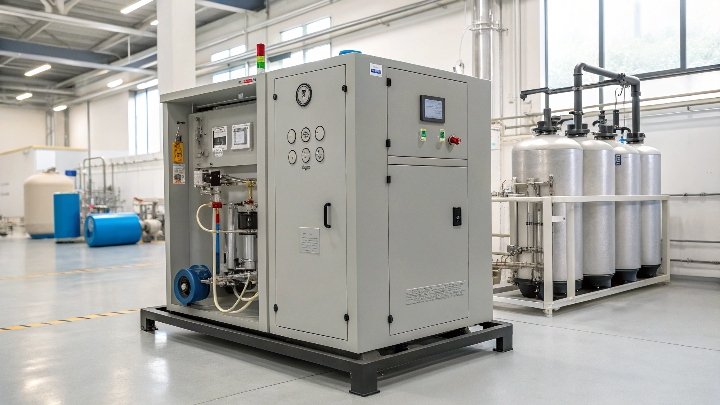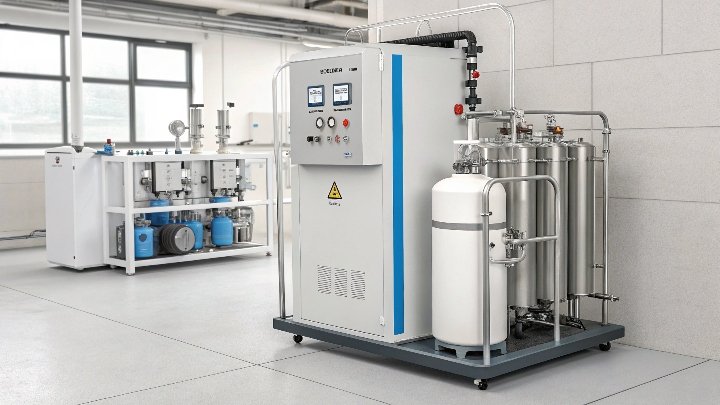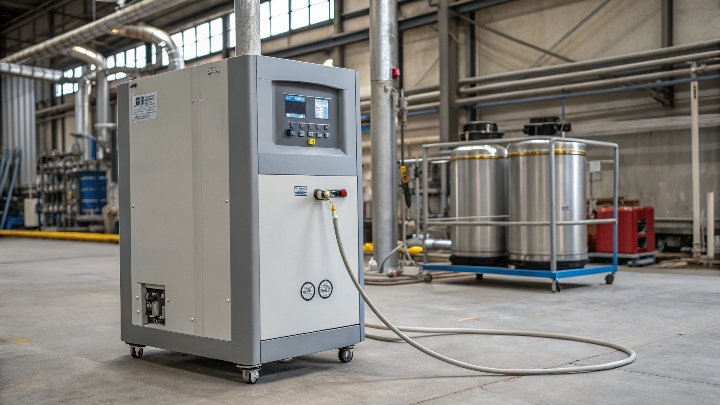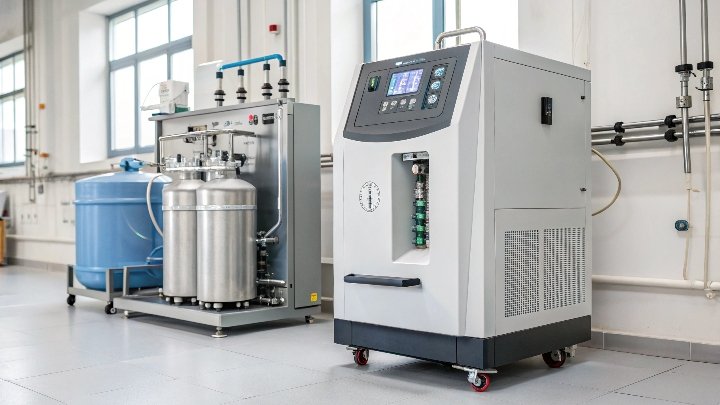Many people struggle with finding reliable oxygen sources. I see them worry about quality and cost. Sodium-based zeolite can solve these problems. Let me explain how.
Sodium-based zeolite is a special adsorbent. It selectively captures nitrogen and leaves oxygen. This process supplies high-purity oxygen. This technology allows an oxygen concentrator to produce medical-grade oxygen from ambient air. It is efficient, affordable, and widely used. That is why sodium-based zeolite is key to modern oxygen generation.
I once watched a close friend depend on an oxygen machine at home. I remember how sodium-based zeolite made daily life more comfortable. Let us go deeper into this topic.
The Science Behind Sodium-Based Zeolite in Oxygen Generation?
I see confusion about how adsorbents work. Many think it is magic. Sodium-based zeolite is not magic. It is simple science. Let me address the key concepts.
Sodium-based zeolite traps nitrogen more than oxygen. This difference happens because of the pore size and ionic structure. The result is high-purity oxygen release. This is how an oxygen concentrator can replace bulky oxygen tanks. Zeolite’s performance depends on temperature, pressure, and moisture. That is the science in brief.
I want to explain the fundamental science behind sodium-based zeolite. It is an aluminosilicate material made of a crystalline framework. This framework has uniform pores that allow certain molecules to enter while blocking others. Nitrogen molecules fit more readily inside these pores than oxygen molecules because of ionic charges and size differences. This leads to strong binding interactions with nitrogen, leaving oxygen with less chance of getting captured. This behavior is central to the science of gas separation.
Crystal Structure and Selective Adsorption
Sodium-based zeolite has a structure that includes aluminum, silicon, and oxygen atoms. These atoms form a lattice with negative charge sites. The sodium ions balance these charges. Nitrogen, which has a certain quadrupole moment, is attracted to these negatively charged sites. This selective attraction helps remove nitrogen from air. If I raise pressure, more nitrogen will be adsorbed. If I lower pressure, nitrogen is released, and I can recover the zeolite for another cycle. This cyclical process is what happens inside an oxygen concentrator.
Key Factors That Impact Performance
Several factors influence how well sodium-based zeolite captures nitrogen. Temperature is critical because it affects adsorption kinetics. Pressure also plays an important role. Moisture can block the pores and damage adsorption efficiency. The following table summarizes these factors:
| Factor | Impact on Adsorption |
|---|---|
| Temperature | Controls adsorption speed |
| Pressure | Influences capacity for nitrogen |
| Moisture | Decreases pore availability |
This table highlights why controlling temperature, pressure, and moisture is vital. If we want better performance, we must optimize these variables. I see many people focus on bigger systems or fancier designs. Yet sometimes, simple moisture control is enough to keep zeolite in good condition. That is the power of understanding the science behind sodium-based zeolite.
Pressure Swing Adsorption (PSA): How Sodium-Based Zeolite Powers Oxygen Concentrators?
Many wonder why oxygen concentrators work so well. They worry about complexity. PSA technology is not difficult. Sodium-based zeolite and PSA together solve real-world oxygen supply problems.
Pressure Swing Adsorption uses alternating high and low pressures. In high pressure, zeolite adsorbs nitrogen. In low pressure, it releases nitrogen. This cycle provides a continuous flow of concentrated oxygen. The process is energy-efficient and cost-effective. It is the backbone of modern concentrators used in homes and hospitals.
PSA technology is a simple yet powerful method. I appreciate how it harnesses the power of adsorption and desorption in a continuous cycle. When the system is pressurized with ambient air, nitrogen molecules stick to the zeolite. At the same time, oxygen passes through and gathers in a separate chamber. Once the zeolite is saturated with nitrogen, the system lowers pressure. This causes nitrogen to leave the zeolite pores. The nitrogen is then vented out, and the zeolite is ready for the next cycle. This process repeats many times per hour, ensuring a steady supply of oxygen.
Cycle Steps and Timing
The PSA cycle has a few key steps. First is pressurization, where air enters the vessel and nitrogen is adsorbed. Next is oxygen collection, when the oxygen flows to the product tank. Then comes depressurization, where pressure is released. Finally, there is a purge or equalization step, where leftover nitrogen is removed. I like to see how engineers fine-tune these steps to optimize throughput.
Main Variables in PSA
There are several variables that affect PSA performance. Cycle time is critical. If we shorten the cycle too much, the zeolite may not fully adsorb nitrogen. If we make it too long, energy consumption can rise. The following table shows some key parameters to watch:
| Parameter | Effect |
|---|---|
| Cycle Time | Balances nitrogen capture |
| Pressure Level | Impacts adsorption capacity |
| Purge Rate | Clears residual nitrogen |
I enjoy learning about these parameters because they show how science meets practical design. PSA combined with sodium-based zeolite offers a robust system. This system is more convenient than traditional oxygen cylinders. It also reduces operating costs by relying on ambient air. That is why I trust PSA technology for daily oxygen needs.
Applications and Advantages of Sodium-Based Zeolite in Medical and Industrial Oxygen Concentrators?
Many facilities depend on large oxygen supplies. They face high costs and logistical headaches. Sodium-based zeolite helps them. It streamlines oxygen production and reduces reliance on bulk cylinders.
Medical concentrators give patients a stable oxygen source. Industrial concentrators support processes like welding and glass making. Sodium-based zeolite supports both by removing nitrogen from air. This approach is sustainable and can be scaled up. That is why it is used in clinics, hospitals, and factory floors worldwide.
I have seen sodium-based zeolite shine in both medical and industrial settings. In medical fields, oxygen concentrators give patients a dependable supply of oxygen without heavy tanks. This is especially important for home care, where people need mobility and constant oxygen. I recall a friend who used a small concentrator after developing a chronic respiratory condition. That device used sodium-based zeolite to provide a stable flow of high-purity oxygen. The friend appreciated the freedom from large cylinders. This technology is also used in hospitals, clinics, and emergency vehicles.
Industrial Oxygen Needs
Industrial sites often need large volumes of oxygen. Factories that produce glass, steel, or chemicals rely on controlled oxygen levels to support various processes. Traditional supply methods involve delivering oxygen in cylinders or cryogenic tanks. That can be costly and requires careful handling. Sodium-based zeolite makes on-site generation possible. By installing oxygen concentrators that use PSA, an industrial facility can produce its own oxygen as needed. This lowers transportation costs and simplifies inventory management.
Key Advantages
Sodium-based zeolite offers a blend of efficiency and reliability. I appreciate how it can be renewed many times through a simple pressure change. It reduces costs over time because there is no need for continuous replacement. The table below highlights some core advantages:
| Advantage | Description |
|---|---|
| Renewability | Zeolite regenerates through pressure swings |
| High Purity | Produces consistent oxygen levels |
| Lower Logistics | No need for heavy cylinder transportation |
| Cost-Effective | Saves money with on-site generation |
These benefits make sodium-based zeolite a popular choice. I see more facilities adopting it for health, safety, and economic reasons. With further research, I expect we will see even better versions of sodium-based zeolite that handle moisture and other challenges more effectively. That is how technology evolves, step by step, to serve our practical needs.
Conclusion
Sodium-based zeolite is a simple but powerful technology. It transforms air into high-purity oxygen. I believe it will keep improving and providing better solutions for oxygen needs.






